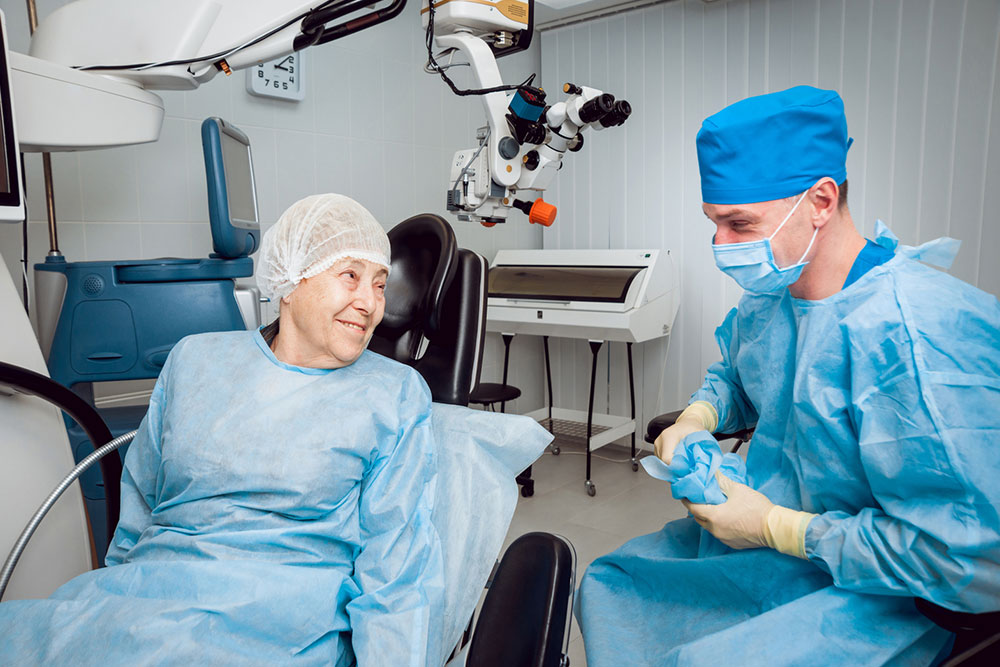
Cataract surgery – 6 things to know
Cataract surgery is a procedure for removing the eye lens. Eye doctors, or ophthalmologists, perform the surgery, which involves replacing the eye with an artificial lens. When a person has a cataract, it makes their otherwise clear lens cloudy, which can impair vision. The surgery is outpatient, meaning the patient does not have to stay in the hospital. It is a routine surgery, but, like all surgeries, it may involve small risks. However, in most cases, it is safe.
Procedure – What it entails
Here are a few things to know about the procedure:
1. Preparing for the surgery
Before surgery, the patient must meet their doctor for a thorough eye examination. During this, the ophthalmologist will do the following:
- Examine eye health.
- Assess the signs to see if surgery is necessary.
- Check the risk factors that can complicate the surgery.
- Measure the eye to assess the correct focusing power for the intraocular lens (IOL).
- Let the patient know if they require any eye drops.
A patient must also make the most of this time and put forward questions or concerns. Some things they should ask their doctor are as follows:
- What are the possible risks associated with the surgery?
- What kind of aftercare is needed?
- What will be the recovery duration?
- Will contacts or glasses be needed after the cataract surgery?
- What type of IOL is suitable?
- When is it possible to resume usual activities?
The patient will not be able to drive after the surgery, so they must make sure they have someone to drive them to and from the hospital after the surgery.
2. The procedure
The doctor undertakes the following steps in the cataract surgery:
- Numb the eye surface
It is called topical anesthesia. Eye drops are placed in the eye so the patient does not feel anything during surgery. The doctor may also give some treatments to help the patient relax. While awake throughout the surgery, the patient will not see anything coming at them. All the patient will see is a rainbow of lights. - Make an incision in the cornea
The ophthalmologist will make a tiny incision using a blade or a laser. Typically, the incision does not need any stitches to close. - Break up and remove the cataract through phacoemulsification
The surgeon employs ultrasound waves to break the lens into several tiny pieces. After this, they will suction out these pieces. - Insert the new lens
The surgeon inserts the new lens through the same incision. Typically, IOLs fold up for a seamless insertion and then unfold into the space where the cloudy lens had rested. - Guard the eye
Lastly, the doctor tapes the shield like an eye patch over the eye to guard it.
3. Surgery duration
Typically, cataract surgery takes 10–15 minutes. However, with recovery and preparation added in, the appointment may last several hours. Therefore, the patient must ask the doctor about the duration and inform the person driving them.
4. Post-procedure
Once the surgery is over, the surgeon will monitor the patient for 15 to 30 minutes. Then, the patient can sit with the doctor to discuss the aftercare before heading home. The patient’s eyesight might be blurry following the surgery, but this is normal. The patient’s vision will improve in the next few days or weeks.
5. Complications and risks
While typically safe, like all surgeries, cataract surgery comes with some risks. These include the following:
- Cloudiness in the eye after the surgery
A cloudy layer develops behind the implant in 5–15 percent of cases. But it is easy to treat with a YAG laser capsulotomy, a five-minute procedure. - Blurred vision after the surgery
Blurriness is seen after the procedure, but it cleans up in a few days, although it can take longer in some cases. - Floaters after cataract surgery
Floaters appear like dust specks that follow the line of vision. While they do not necessarily require treatment, they can be a symptom of a retinal tear. - Dry eyes after the cataract surgery
Gritty or dry eyes are common cataract symptoms but are easily managed with eye drops. - Eye pain after cataract surgery
Severe pain can imply an infection or other complications. The surgeon can help with the treatment. - Double vision after the surgery
It can have multiple causes. However, it primarily occurs when the brain gets used to its new visual acuity and goes away in a few days. - Infection
It is an infection of the fluids of the inner eye, but it is rare and occurs in only 0.05 to 0.3 percent of surgeries. - Anesthesia allergy
Some people may experience an allergy to anesthesia, but severe reactions are rare.
6. Cost
Insurance can typically cover the cost of surgery, provided it is deemed medically necessary. Surgery costs vary based on surgical technique and location. According to reports published in 2014, when paying for it out-of-pocket, the costs can be roughly $2500, including the hospital, surgeon, anesthesiologist, and postoperative fee. The expense will likely be higher now, so the patient can contact the ophthalmologists near them to learn the precise amount.




